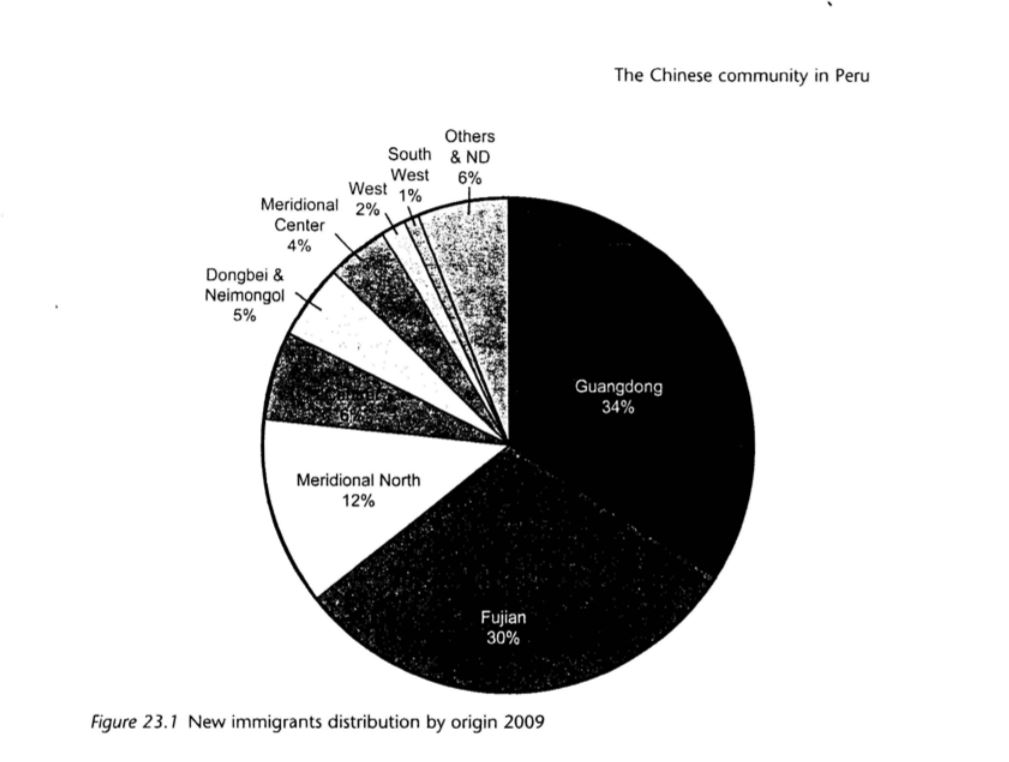[EN/RU] New immigrants: A new community? The Chinese community in Peru in complete transformation
- The Chinatown In Peru and the Changing Peruvian Chinese Communities - 23 marzo, 2019
- [EN/RU] New immigrants: A new community? The Chinese community in Peru in complete transformation - 16 marzo, 2019
- Isabelle Lausent-Herrera: Between Catholicism and Evangelism. The Peruvian Chinese Community - 20 febrero, 2019
[EN]
The current article of Isabelle Lausent-Herrera can be identified as a continuation of the author’s previous works dedicated to Peruvian Chinese community but it’s also possible to count this work as an independent source of historical events happened at the certain time period. The work is divided into a few parts of which the first is a short historical summary of all the events happened which are identified as the period of “Old” Chinese immigration to Peru. It’s important to be mentioned that the history is artificially parted into two time periods, and by that follows the second section of text which is called “New Chinese Immigration to Peru”. The author makes an analysis of critically published data and more detailed unpublished micro-data from various sources to create a picture of the Chinese population in Peru and its development through the time. The resources that the writer especially paid attention to are the National Immigration and Naturalization Directorate (DIGEMIN) which gave lots of details considering the quantities of Chinese migrating to Peru, coming back to China, the numbers of illegal immigrants etc. The work also covers the topic of the differentiation between the regions of Chinese settlements in various parts of Peru.
Another big part of the text is dedicated to the immigrants’ distribution by origin from which is concluded that the majority of the Chinese population in Peru is either Fujianese either Cantonese Chinese. Chapter A tradition of immigration: Cantonese and Fujianese covers the percentage of the upper-mentioned two provinces citizens and their activities, including some stories happened in real life. There is also a chapter introducing Chinese immigrants from other provinces.
Speaking subjectively, the most interesting and informative chapter to discover will be the one discussing the Tusans, their community foundations and the question of their identity. All in all, Isabel Lausent-Herrera’s work continues to tell people’s life stories, all the difficulties and obstacles to overcome in a foreign country that at some point might either requalify into the native land either stay the land being far away metaphorically and realistically both.
(Katjia Mokhireva)
[RU]
Статья Изабель Лозент-Эрреры может рассматриваться как продолжение предыдущих работ автора, посвященных перуанско-китайской общине, но также и как самостоятельный информационный источник, перечисляющий исторические события, произошедшие в определенный период времени развития китайского общества в Перу.
Работа разделена на несколько частей, и первая представляет собой краткую историческую сводку всех событий, которые могут быть идентифицированы как период “старой” китайской иммиграции в Перу. Важно отметить, что история в данном отрезке времени «искусственным» образом разделена на два временных периода, из чего вторым разделом текста следует “Новая китайская иммиграция в Перу”. Автор анализирует ранее опубликованные данные и большое количество раннее не доступных источников для создания полной картины китайского населения Перу и его развития в XX-XXI веках. Особое внимание автор уделил Национальному управлению по вопросам иммиграции и натурализации (DIGEMIN), которое предоставило множество подробной информации, касающейся численности китайцев, мигрирующих в Перу, возвращающихся в Китай, числа незаконных иммигрантов и т.д. Работа также освещает тему дифференциации регионального расположения китайских коммун в различных частях Перу.
Значительная часть текста посвящена распределению иммигрантов по происхождению, из которого можно сделать вывод, что большинство китайского населения в Перу составляют либо китайцы из провинции Фудзянь, либо кантонцы. Глава Традиция иммиграции: Гуандун и Фудзянь охватывает процентную долю граждан двух вышеупомянутых провинций и их деятельность, включая некоторые истории, произошедшие в реальной жизни. Существует также глава, знакомящая с китайскими иммигрантами из других провинций.
Если говорить субъективно, то наиболее интересной и информативной будет глава, посвященная Тусанам, их общественным коммунам и проблеме их идентичности. В итоге, в своей работе Изабель Лозент-Эрреры через истории реальных людей анализирует трудности и препятствия, которые преодолевают иммигранты, затрагивает тему возможности восприятия нового места жительства как своего родного, и может ли человек быть частью другой страны и метафорически, и физически.
(Katjia Mokhireva)



No hay comentarios